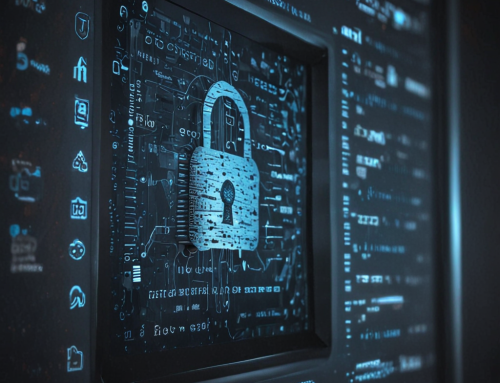In today’s interconnected world, cybersecurity remains an ever-present concern. With the rapid pace of technological advancements, cyber threats are becoming increasingly sophisticated and pose significant risks, ranging from data breaches to cyber espionage to cyber sabotage. Experts at Cybersecurity Ventures predict that cybercrime will cost the world $9.5 trillion this year. That’s why staying ahead of the curve is vital in keeping information and assets safe from prying eyes, which is why we give you our five cybersecurity predictions for 2024.
1. Artificial Intelligence and Machine Learning Will Lead the Way
Experts predict that AI and machine learning will be the cornerstone of cybersecurity in 2024 and beyond. These technologies are already becoming a part of many security solutions, from anti-malware to endpoint protection. AI and machine learning can analyze massive amounts of data, detect patterns, and predict an attack before it happens, minimizing cybersecurity risks.
2. Increased Adoption of Cloud Services
With more businesses and individuals turning to the cloud for storage and other services, cybersecurity threats to these platforms are on the rise. By 2024, cloud adoption is expected to reach new heights, with a MarketsamdMarkets report predicting that the global cloud services market will grow to $623.3 billion by then, up from $371.4 billion in 2020. This growth brings new cybersecurity challenges that require more sophisticated cloud-based protection tools.
3. Physical Security Products Will Continue to Play a Crucial Role
Despite the increasing collective focus on digital security, physical security solutions such as port locks, network locks, and data blockers will still be crucial. The role of physical security products has become more relevant today because of the increasing interconnectedness of devices apart from the advent of IoT. For instance, organizations will require port locks to safeguard against deliberate attempts to cause damage through direct connection.
4. Privacy Concerns
Amid the upward trend of globalization and digitalization, the issue of privacy remains a constantly evolving aspect of technology. It is predicted that privacy will become an increasingly important focus point amid evolving cyber-security threats. Experts anticipate that by the end of 2024, laws such as the General Data Protection Regulation (GDPR), the California Consumer Privacy Act (CCPA), and others will continue to get more stringent. These legal checks are aimed at addressing data protection and privacy concerns, reinforced by awareness of high-profile data breach events in the media.
5. Cybersecurity Skills Gap
A recent Gartner cybersecurity workforce study found that the lack of cybersecurity professionals or talent is predicted to be responsible for more than 50% of significant cybersecurity incidents by 2025. This skills gap poses a significant risk to cybersecurity initiatives and necessitates employers’ increased efforts at hiring cybersecurity professionals, as well as developing internal training programs in-house.
Embracing the Future of Cybersecurity
As we look to the horizon of cybersecurity, our predictions for 2024 and beyond illuminate both opportunities and challenges. The advancement of AI and machine learning is reshaping the defense mechanisms against cyber threats. The rising adoption of cloud services necessitates stronger and more sophisticated protection tools. Though digital security is at the forefront, physical security products will continue to play an integral role. Privacy concerns are pushing for more stringent laws, and the cybersecurity skills gap is urging organizations to invest in talent development.
Understanding these trends is not merely an exercise in speculation but a call to action. It is an invitation to adapt, innovate, and strengthen your cybersecurity posture. Therefore, let us embrace these challenges head-on and turn them into opportunities to secure our digital landscape better. After all, in a world that is increasingly reliant on technology, safeguarding our cyber environment is not just a responsibility – it’s a necessity.










